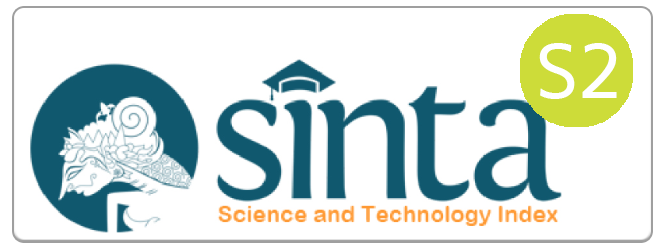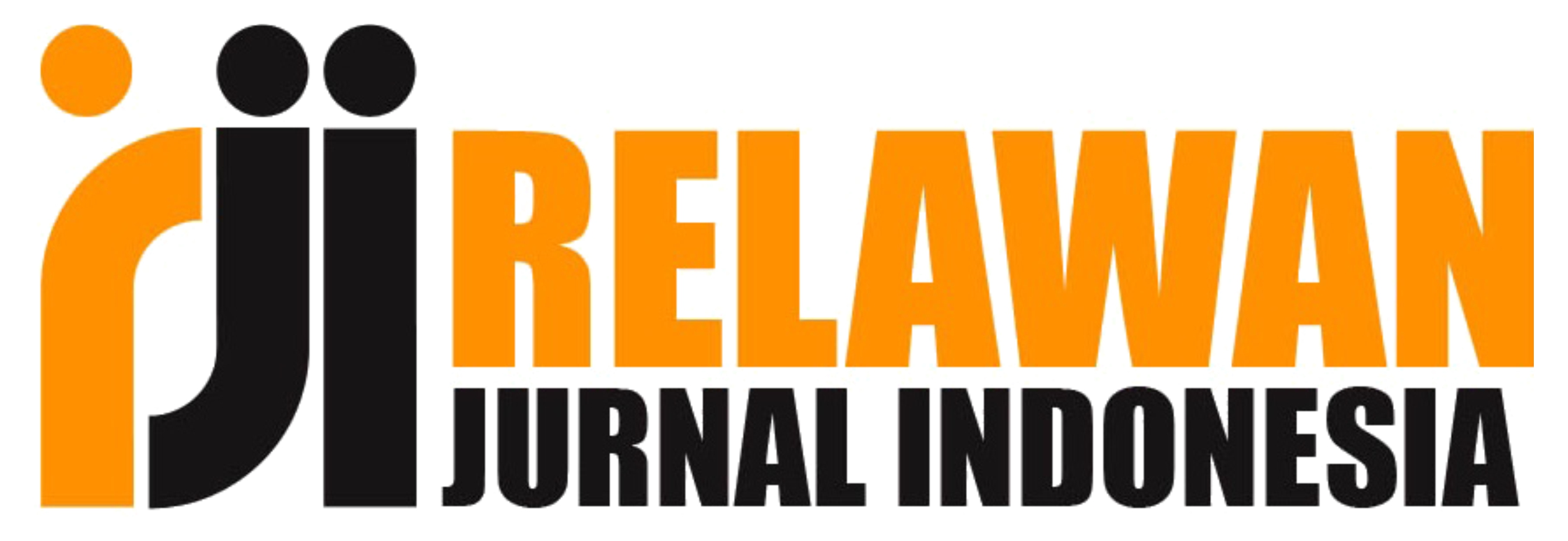Electronic Customer Relationship Management Systems in E-Commerce Platforms: Exploring the Antecedents of Technology Acceptance and Customer Satisfaction
Abstract
This paper undertakes a comprehensive analysis of the cutting-edge maneuvers in Electronic Customer Relationship Management e-CRM in an e-commerce context, encompassing four significant categories: e-CRM, cost, technology acceptance, and customer satisfaction. It also evaluates the construct developments in these four categories. To assess the effectiveness and accuracy of the measurement model, the method of Structural Equation Modeling was utilized. Gathered data from 167 e-commerce sellers in Bandung, the results showed that e-CRM performance relied heavily on the ability of infrastructure, ease of use, and e-learning systems. The development and integration of these factors led to a positive effect on the effectiveness of the e-CRM. In addition, the findings underscored that customer expenses had a favorable influence on customer relationship performance. Consequently, this relationship performance led to an enhancement in the overall effectiveness of the e-CRM in e-commerce. A managerial implication for each category is also provided, along with suggestions for future research and directions.
Keywords
Full Text:
PDFReferences
Abosag, I., Martin, F., & Zahy, R. (2016). Social media and branding in Asia: Threats and opportunities. In: Melewar, T. C., Nguyen, Bang and Schultz, Don, (eds.), Asia Branding: Connecting Brands, Consumers and Companies. London: Palgrave Macmillan.
Adnani, L., Jusuf, E., Alamsyah, K., & Jamaludin, M. (2023). The role of innovation and information sharing in supply chain management and business performance of halal products in tourism destinations. Uncertain Supply Chain Management, 11(1), 195–202. http://dx.doi.org/10.5267/j.uscm.2022.10.007.
Al-Bashayreh, M., Almajali, D., Al-Okaily, M., Masa’deh, R., & Samed Al-Adwan, A. (2022). Evaluating Electronic Customer Relationship Management System Success: The Mediating Role of Customer Satisfaction. Sustainability, 14(19), 12310. https://doi.org/10.3390/su141912310.
Almunawar, M. N., Anshari, M., & Lim, S. A. (2022). Customer Acceptance of Online Travel Agents in Indonesia. Journal of Asia-Pacific Business, 23(3), 254–272. https://doi.org/10.1080/10599231.2022.2095588.
Alzoubi, H., Alshurideh, M., Kurdi, B., Akour, I., & Aziz, R. (2022). Does BLE technology contribute towards improving marketing strategies, customers’ satisfaction and loyalty? The role of open innovation. International Journal of Data and Network Science, 6(2), 449–460. http://dx.doi.org/10.5267/j.ijdns.2021.12.009.
Awa, H. O., Ojiabo, O. U., & Emecheta, B. C. (2015). Integrating TAM, TPB and TOE frameworks and expanding their characteristic constructs for e-commerce adoption by SMEs. Journal of Science & Technology Policy Management, 6(1), 76–94. https://doi.org/10.1108/JSTPM-04-2014-0012.
Bougie, R., & Sekaran, U. (2019). Research methods for business: A skill building approach. Hoboken: John Wiley & Sons.
Cao, Y., Ajjan, H., & Hong, P. (2018). Post-purchase shipping and customer service experiences in online shopping and their impact on customer satisfaction: An empirical study with comparison. Asia Pacific Journal of Marketing and Logistics, 30(2), 400-416. https://doi.org/10.1108/APJML-04-2017-0071
Chauhan, S. (2015). Acceptance of mobile money by poor citizens of India: Integrating trust into the technology acceptance model. Info, 17(3), 58–68. https://doi.org/10.1108/info-02-2015-0018.
Chen, C., Xu, X., & Arpan, L. (2017). Between the technology acceptance model and sustainable energy technology acceptance model: Investigating smart meter acceptance in the United States. Energy Research & Social Science, 25, 93–104. https://doi.org/10.1016/j.erss.2016.12.011.
Chi, N. T. K. (2021). Innovation capability: The impact of e-CRM and COVID-19 risk perception. Technology in Society, 67, 101725. https://doi.org/10.1016/j.techsoc.2021.101725.
De Matos, C. A., & Rossi, C. A. V. (2008). Word-of-mouth communications in marketing: A meta-analytic review of the antecedents and moderators. Journal of the Academy of Marketing Science, 36, 578–596. https://doi.org/10.1007/s11747-008-0121-1.
Dehghanpouri, H., Soltani, Z., & Rostamzadeh, R. (2020). The impact of trust, privacy and quality of service on the success of E-CRM: The mediating role of customer satisfaction. Journal of Business & Industrial Marketing, 35(11), 1831–1847. https://doi.org/10.1108/JBIM-07-2019-0325.
Demirel, P., & Danisman, G. O. (2019). Eco-innovation and firm growth in the circular economy: Evidence from European small-and medium-sized enterprises. Business Strategy and the Environment, 28(8), 1608–1618. https://doi.org/10.1002/bse.2336.
Dewi, N. P. K., & Ramli, A. H. (2023). E-Service Quality, E-Trust dan E-Customer Satisfaction Pada E-Customer Loyalty dari Penggunaan E-Wallet OVO. Jurnal Ilmiah Manajemen Kesatuan, 11(2), 321–338. https://doi.org/10.37641/jimkes.v11i2.2000.
Douglas, S. (2023). Achieving online dialogic learning using breakout rooms. Research in Learning Technology, 31, 1-16. https://doi.org/10.25304/rlt.v31.2882
Falk, R. F., & Miller, N. B. (1992). A primer for soft modeling. Akron, Ohio: University of Akron Press.
Feinberg, R. A., Kadam, R., Hokama, L., & Kim, I. (2002). The state of electronic customer relationship management in retailing. International Journal of Retail & Distribution Management, 30(10), 470–481. https://doi.org/10.1108/09590550210445344.
Ford, R. C., Wilderom, C. P., & Caparella, J. (2008). Strategically crafting a customer-focused culture: An inductive case study. Journal of Strategy and Management, 1(2), 143–167. https://doi.org/10.1108/17554250810926348.
Fornell, C., & Bookstein, F. L. (1982). Two structural equation models: LISREL and PLS applied to consumer exit-voice theory. Journal of Marketing Research, 19(4), 440–452. https://doi.org/10.1177/002224378201900406.
Gantz, J. F., Reinsel, D., & Rydning, J. (2019). The US datasphere: Consumers flocking to cloud. White Paper. International Data Corporation (IDC), January 2019, USA.
Hu, Z., Ding, S., Li, S., Chen, L., & Yang, S. (2019). Adoption intention of fintech services for bank users: An empirical examination with an extended technology acceptance model. Symmetry, 11(3), 340.
Hair Jr, J. F., Hult, G. T. M., Ringle, C. M., & Sarstedt, M. (2021). PLS-SEM Book: A primer on partial least squares structural equation modeling (PLS-SEM) (edr Ed.): Sage publications.
Hair Jr, J. F., Sarstedt, M., Ringle, C. M., & Gudergan, S. P. (2017). Advanced issues in partial least squares structural equation modeling: SAGE Publications.
Huda, S. S., Saha, S., & Kabir, M. H. (2021). Influence of e-CRM on customer satisfaction and customer loyalty: A study on Bangladesh’s fast food industry. International Journal of Electronic Customer Relationship Management, 13(1), 30–44. https://doi.org/10.1504/IJECRM.2021.115607.
Huynh, T., Duong, M. H., Phan, T. T., Do, T. V., Do, T. T. T., & Nguyen, K. T. (2019). Team dynamics, leadership, and employee proactivity of Vietnamese firms. Journal of Open Innovation: Technology, Market, and Complexity, 5(1), 16. https://doi.org/10.3390/joitmc5010016.
Jamaludin, M. (2021). The influence of supply chain management on competitive advantage and company performance. Uncertain Supply Chain Management, 9(3), 696–704. http://dx.doi.org/10.5267/j.uscm.2021.4.009.
Jamaludin, M., Busthomi, H., Gantika, S., Rosid, A., Sunarya, E., & Nur, T. (2022). Market orientation and SCM strategy on SME organizational performances: The mediating effect of market performance. Cogent Economics & Finance, 10(1), 2157117. https://doi.org/10.1080/23322039.2022.2157117.
Jie, Y. U., Subramanian, N., Ning, K., & Edwards, D. (2015). Product delivery service provider selection and customer satisfaction in the era of internet of things: A Chinese e-retailers’ perspective. International Journal of Production Economics, 159, 104–116. https://doi.org/10.1016/j.ijpe.2014.09.031.
Kaur, J., & Kaur, B. (2016). The influence of e-CRM competitive advantage on e-CRM performance in the Indian banking industry. Strategic Change, 25(5), 537–550. https://doi.org/10.1002/jsc.2079.
Khanh, C. N. T., Phong, L. T., & Cao, K. D. (2022). The impact of organizational factors on E-CRM success implementation. VINE Journal of Information and Knowledge Management Systems, 52(4), 612–629. https://doi.org/10.1108/VJIKMS-05-2020-0096.
Kumar, P., Mokha, A. K., & Pattnaik, S. C. (2022). Electronic customer relationship management (E-CRM), customer experience and customer satisfaction: Evidence from the banking industry. Benchmarking: An International Journal, 29(2), 551–572. https://doi.org/10.1108/BIJ-10-2020-0528.
Lambert, D. M., & Enz, M. G. (2017). Issues in supply chain management: Progress and potential. Industrial Marketing Management, 62, 1–16. https://doi.org/10.1016/j.indmarman.2016.12.002.
Lee, I. (2019). The Internet of Things for enterprises: An ecosystem, architecture, and IoT service business model. Internet of Things, 7, 100078. https://doi.org/10.1016/j.iot.2019.100078.
Lee, I., & Shin, Y. J. (2018). Fintech: Ecosystem, business models, investment decisions, and challenges. Business Horizons, 61(1), 35–46. https://doi.org/10.1016/j.bushor.2017.09.003.
Li, F., Lu, H., Hou, M., Cui, K., & Darbandi, M. (2021). Customer satisfaction with bank services: The role of cloud services, security, e-learning and service quality. Technology in Society, 64, 101487. https://doi.org/10.1016/j.techsoc.2020.101487.
Madhani, P. M. (2018). Building a customer-focused culture in organisations: Developing 7Cs model. International Journal of Business Excellence, 16(2), 199–232. https://doi.org/10.1504/IJBEX.2018.094705.
Mansyur, M. (2021). Marketing opportunities for bank syariah Mandiri e-banking services as a payment method. Research Horizon, 1(2), 71-80. https://doi.org/10.54518/rh.1.2.2021.71-80.
Maroofi, F., Darabi, A., & Torabi, J. (2012). Effects of e-CRM on customer–bank relationship quality and results. International Journal of Academic Research in Accounting, Finance and Management Sciences, 2(3), 164–182. https://ideas.repec.org/a/hur/ijaraf/v2y2012i3p164-182.html.
Mokha, A. K., & Kumar, P. (2021). Using the technology acceptance model (TAM) in understanding customers’ behavioural intention to use E-CRM: Evidence from the Banking Industry. Vision, 09722629211060565. https://doi.org/10.1177/09722629211060565.
Navimipour, N. J., & Soltani, Z. (2016). The impact of cost, technology acceptance and employees’ satisfaction on the effectiveness of the electronic customer relationship management systems. Computers in Human Behavior, 55, 1052–1066. https://doi.org/10.1016/j.chb.2015.10.036.
Nugroho, A. H., Bakar, A., & Ali, A. (2017). Analysis of technology acceptance model: Case study of Traveloka. Arthatama, 1(1), 27–34. https://arthatamajournal.co.id/index.php/home/article/view/8.
Nuseir, M. T., Aljumah, A. I., & El Refae, G. A. (2022). Impact of Big Data Analytics and Managerial Support on CRM: Exploring Mediating Role of Marketing Analytics. 2022 9th International Conference on Internet of Things: Systems, Management and Security (IOTSMS), 1–8.
Pai, R. R., & Alathur, S. (2019). Determinants of individuals’ intention to use mobile health: Insights from India. Transforming Government: People, Process and Policy, 13(3/4), 306–326. https://doi.org/10.1108/TG-04-2019-0027.
Pan, L., Fu, X., & Li, Y. (2022). SME participation in cross-border e-commerce as an entry mode to foreign markets: A driver of innovation or not? Electronic Commerce Research, 1–30. https://doi.org/10.1007/s10660-022-09539-7.
Parker, J. M., Marasi, S., James, K. W., & Wall, A. (2019). Should employees be “dooced” for a social media post? The role of social media marketing governance. Journal of Business Research, 103, 1–9. https://doi.org/10.1016/j.jbusres.2019.05.027.
Prasetyo, Y. T., Ong, A. K. S., Concepcion, G. K. F., Navata, F. M. B., Robles, R. A. V., Tomagos, I. J. T., Young, M. N., Diaz, J. F. T., Nadlifatin, R., & Redi, A. A. N. P. (2021). Determining factors Affecting acceptance of e-learning platforms during the COVID-19 pandemic: Integrating Extended technology Acceptance model and DeLone & Mclean is success model. Sustainability, 13(15), 8365. https://doi.org/10.3390/su13158365.
Rahimi, R., & Kozak, M. (2017). Impact of customer relationship management on customer satisfaction: The case of a budget hotel chain. Journal of Travel & Tourism Marketing, 34(1), 40–51. https://doi.org/10.1080/10548408.2015.1130108.
Rehak, D., Senovsky, P., Hromada, M., & Lovecek, T. (2019). Complex approach to assessing resilience of critical infrastructure elements. International Journal of Critical Infrastructure Protection, 25, 125–138. https://doi.org/10.1016/j.ijcip.2019.03.003.
Rezaei, G., Hosseini, S. M. H., & Sana, S. S. (2022). Exploring the Relationship between Data Analytics Capability and Competitive Advantage: The Mediating Roles of Supply Chain Resilience and Organization Flexibility. Sustainability, 14(16), 10444. https://doi.org/10.3390/su141610444.
Rhodes, C. M., & Lohr, K. D. (2021). Culturally Inclusive Teaching of Adult English Language Learners. In; Peltz, David P., & Clemons, Anthony C., Research Anthology on Culturally Responsive Teaching and Learning (pp. 717–734). IGI Global.
Shroff, R. H., Deneen, C. C., & Ng, E. M. (2011). Analysis of the technology acceptance model in examining students’ behavioural intention to use an e-portfolio system. Australasian Journal of Educational Technology, 27(4), 600-618. https://doi.org/10.14742/ajet.940
Saputro, A. W., & Utomo, H. (2023). Pengaruh E-Service Quality Terhadap E-loyalty dengan Brand Image dan E-Satisfcation Sebagai Variabel Mediasi. Jurnal Ilmiah Manajemen Kesatuan, 11(2), 203-218. https://doi.org/10.37641/jimkes.v11i2.1750.
Sukmawan, R., & Zulganef, Z. (2023). The Influence Of Insurance Service Reputation, Customer Relationship Management, And Price Attractiveness On Insurance Service Customer Customer Experience: A Literature Review. International Journal of Business, Economics, and Social Development, 4(1), 32–37. https://doi.org/10.46336/ijbesd.v4i1.366.
Sunarya, E., & Jamaludin, M. (2022). The Influence of Product Quality and After Sales Services on Customer Satisfaction in Mahir Residence Sukabumi. Research Horizon, 2(4), 489-500. https://doi.org/10.54518/rh.2.4.2022.489-500.
Sunarya, E., Nur, T., Rachmawati, I., Suwiryo, D., & Jamaludin, M. (2023). Antecedents of green supply chain collaborative innovation in tourism SMEs: Moderating the effects of socio-demographic factors. Uncertain Supply Chain Management, 11(1), 161–168. http://dx.doi.org/10.5267/j.uscm.2022.10.011.
Tanwari, A. (2020). A study on assessing the relationship between green marketing and brand loyalty in manufacturing sector of Greece: A moderating role of green supply chain practices. Arthatama, 4(1), 44-55. https://arthatamajournal.co.id/index.php/home/article/view/33.
Taylor, S. A., & Hunter, G. L. (2002). The impact of loyalty with e-CRM software and e-services. International Journal of Service Industry Management, 13(5), 452–474. https://doi.org/10.1108/09564230210447931.
Venkatesh, V., Morris, M. G., Davis, G. B., & Davis, F. D. (2003). User acceptance of information technology: Toward a unified view. MIS Quarterly, 425–478. https://doi.org/10.2307/30036540.
Wilson, N. (2019). The impact of perceived usefulness and perceived ease-of-use toward repurchase intention in the Indonesian e-commerce industry. Jurnal Manajemen Indonesia, 19(3), 241-249. https://doi.org/10.25124/jmi.v19i3.2412.
Yang, Z., & Babapour, H. (2022). Critical variables for assessing the effectiveness of electronic customer relationship management systems in online shopping. Kybernetes. ahead-of-print. https://doi.org/10.1108/K-10-2021-0952.
Zameer, H., Tara, A., Kausar, U., & Mohsin, A. (2015). Impact of service quality, corporate image and customer satisfaction towards customers’ perceived value in the banking sector in Pakistan. International Journal of Bank Marketing, 33(4), 442–456. https://doi.org/10.1108/IJBM-01-2014-0015.
Zhang, C., & Dhaliwal, J. (2009). An investigation of resource-based and institutional theoretic factors in technology adoption for operations and supply chain management. International Journal of Production Economics, 120(1), 252–269. https://doi.org/10.1016/j.ijpe.2008.07.023.
Zhang, Z., Zhu, H., Zhou, Z., & Zou, K. (2022). How does innovation matter for sustainable performance? Evidence from small and medium-sized enterprises. Journal of Business Research, 153, 251–265. https://doi.org/10.1016/j.jbusres.2022.08.034.
Zheng, B., Wang, H., Golmohammadi, A.-M., & Goli, A. (2022). Impacts of logistics service quality and energy service of Business to Consumer (B2C) online retailing on customer loyalty in a circular economy. Sustainable Energy Technologies and Assessments, 52, 102333. https://doi.org/10.1016/j.seta.2022.102333.
DOI: http://dx.doi.org/10.56444/mem.v39i1.3771
Article Metrics
Abstract view : 2388 timesPDF - 0 times
Refbacks
- There are currently no refbacks.
Copyright (c) 2024 Media Ekonomi dan Manajemen

This work is licensed under a Creative Commons Attribution 4.0 International License.

This work is licensed under a Creative Commons Attribution 4.0 International License.







